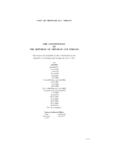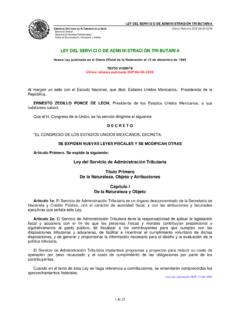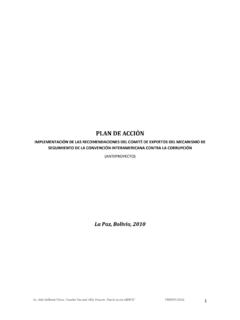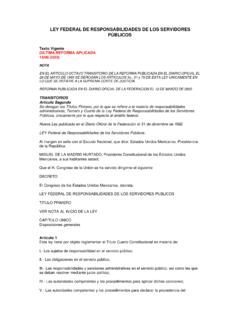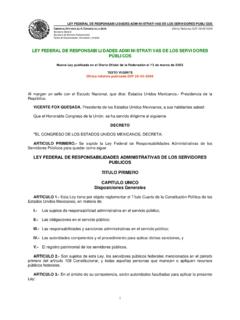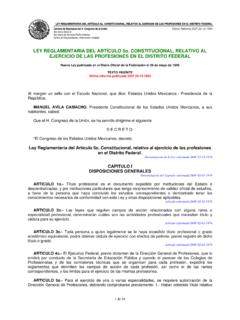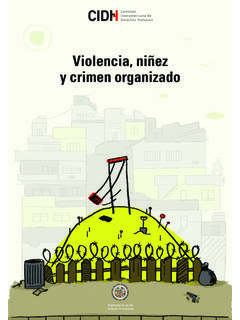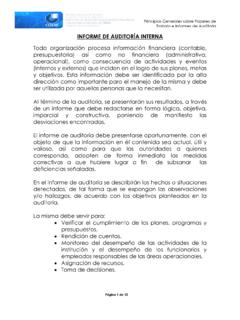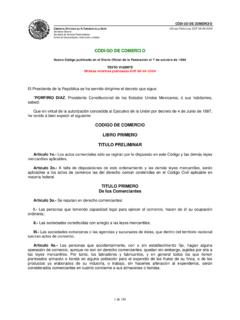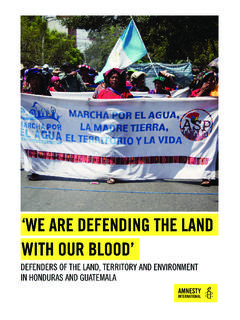Transcription of A-5.1.1 Handicrafts Marketing Proposal 2005-4 - OAS
1 Project Proposal Title The development of marketable Handicrafts with the indigenous population of South Suriname for the national and international markets Location Tirio villages of Kwamalasamutu and Tepu (Suriname) Wayana village of Apetina (Suriname) Background and Justification Suriname s uniqueness expresses itself in the variety of cultures that are preserved in its remote, and undisturbed rainforest. Most economic activity is concentrated in the coastal strip where the majority of the 450,000 people reside, and less attention is given to the forest and the peoples of the interior. The 120,000 km2 Suriname forest has experienced increasing pressure from industrial forces such as mining and logging.
2 Pressures also have been placed on the forest peoples who have been sustainable living from the forest by practicing agriculture, hunting, fishing and gathering. Western societal influences have diminished their cultural and historical knowledge of forest protection and management and introduced a need for alternative jobs and income. Tribal knowledge has accumulated over thousands of years and has been transferred orally from one generation to the other. Handicrafts and forest products have been produced for centuries by mainly women in the indigenous villages. Woven cotton hammocks, pottery, and decorative accessories such as necklaces and bracelets are among the Handicrafts that may be traditionally crafted.
3 Providing the villagers with opportunities for income makes a strong contribution to the sustainable livelihood of the village, the tribes unique artistic traditions, and local environmental biodiversity. Objective The objective of this project is to develop, in collaboration with the indigenous population of the villages of Kwamalasamutu, Tepu and Apetina, traditional Handicrafts that are marketable in Suriname and in the future in international markets in order to create economic and social benefits. Methodology The methodology that will be used is as follows: Inventory of non-timber forest products (NTFPs) that can be used for marketable Handicrafts . To date, ACT-Suriname has compiled the following inventories: assessment of palm resources women s Handicrafts (including natural dyes, seeds as beads); and a report on mara-mara beads.
4 In addition, ten workshops have been held with communities to discuss the technical aspects of making the Handicrafts . Identification of craftsmen/women who are willing, able and equipped to run a small business for their own income generation. The goal is to provide a monthly income of at least US$35 per person. Training for handicraft entrepreneurs. A pilot group of 5-10 women per village is conceived, with the women receiving training in standardization of techniques, product development, administration and business skills, financial and planning aspects, and the development of new markets in an environmentally sensitive manner. In the future, a train the trainers system would accelerate the village-wide and inter-village spread of handicraft education.
5 Promotion of products. The Handicrafts that are marketable would be promoted through the Crabasi company and its network nationally and internationally. The following tasks/budgets are divided among the partners in this project: Inventory Identification Training Promotion ACT: research completed, interviews with workers in the field Crabasi: Sessions with potential handicraft makers (US$ 450) ACT: provides field support, logistical support and transportation (US$ 1500) Crabasi: provides training sessions for women 4 modules (US$ 1200) ACT: provides field support, logistical support and transportation (US$ 3000) Crabasi: provides input on markets, folders, fairs etc.
6 (US$ 500) Expected results Improved integration of traditional knowledge in the daily life of the indigenous communities through preservation of culture and tradition. Reduction in poverty of village populations through continuity in income (for household goods) for several families. Increased level of integration in the market economy.
